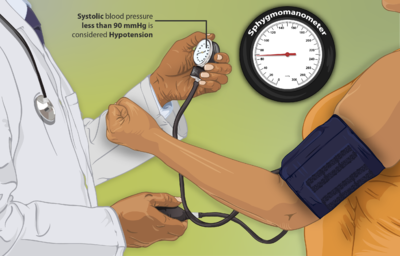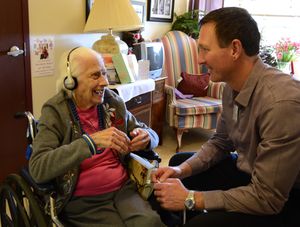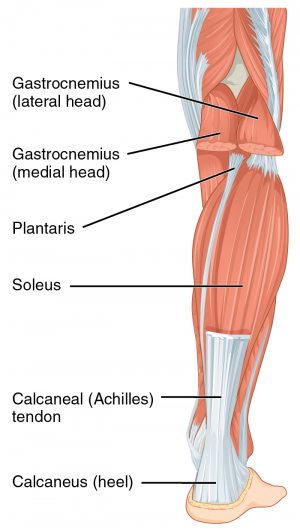Hypotension
Original Editor - Lucinda hampton
Top Contributors - Lucinda hampton and Kim Jackson
Introduction[edit | edit source]
Hypotension is:
- A decrease in systemic blood pressure below accepted low values. While there is not an accepted standard hypotensive value, pressures less than 90/60 are recognized as hypotensive.
- A relatively benign condition that is under-recognized mainly because it is typically asymptomatic. It only becomes a concern once pumping pressure is not sufficient to perfuse key organs with oxygenated blood. This leads to symptoms impacting the quality of life of a patient.[1]
Etiology[edit | edit source]
Some people have low blood pressure all the time, and it is normal for them. Other people experience a sudden drop in blood pressure or have low blood pressure that may be linked to a health problem.
Many systems of the body, including organs, hormones, and nerves, regulate blood pressure. Eg the autonomic nervous system sends the “fight-or-flight” signal that, depending on the situation, tells the heart and other systems in the body to increase or decrease blood pressure. Problems with the autonomic nervous system, such as in Parkinson’s disease, can cause low blood pressure.
Other causes of low blood pressure include:
- Various medications are capable of inducing hypotension. Most notorious for decreasing heart rate are the beta-blockers and calcium channel blocker classes of medicines. Diuretic medications are also possible sources that decrease cardiac stroke volume.
- Disease states eg arrhythmias, valvular regurgitation, valvular stenosis, diastolic or systolic heart failure, large volume losses of blood, diabetes and cardiac tamponade[1].
- Aging
- Pregnancy
Older adults
- Have a higher risk for symptoms of low blood pressure, such as falling, fainting, or dizziness upon standing up or after a meal.
- More likely to develop low blood pressure as a side effect of medicines taken to control high blood pressure.[2]
Epidemiology[edit | edit source]
Highly variable and depends on the exact etiology.
In general:
- Elderly patients are more prone to non-traumatic, symptomatic hypotensive episodes.
- More physically active and healthy patients will have lesser resting asymptomatic blood pressures.[1]
Dementia[edit | edit source]
Clinical studies that have followed older individuals over many years have consistently demonstrated that chronically low blood pressure increases the risk of age-related cognitive decline. For example, a study published in 2017 followed more than 24,000 people for up to 27 years. This study showed that low blood pressure is a significant predictor of cognitive decline and the probability of developing dementia. This was independent of age, gender, weight, cardiovascular, kidney or diabetic status.[3]
Exercise Considerations[edit | edit source]
Individuals with hypotension can exercise safely if a few precautions are taken. Exercise may even help increase blood pressure values slightly. The biggest area of concern for individuals with hypotension is quick postural changes.
- Exercises such as yoga, in which you transition from one position to another quickly or have your head below the level of your heart, can negatively impact your blood pressure values. This can intensify symptoms and could result in fainting.
- Individuals should be careful to make postural transitions slowly.
- Avoiding exercises in which the head is below heart level may be necessary for some individuals, especially if they notice intensified symptoms[4].
- Drops in blood pressure are fairly common after exercise for short periods of time, especially if an individual exercises at their maximal level.
- Systolic pressure levels will decrease to an individual's resting level for five to six minutes after exercise is discontinued and will then drop to a lower level than they measured pre-exercise[4].
The role of the Calf Muscles[edit | edit source]
Low diastolic pressure can arise as a result of medication use, heart failure or other health complications. But, in most people, it is simply a matter of low cardiac output. And low cardiac output occurs when not enough blood is being returned to the heart from the lower body.
- The soleus muscles are responsible for pumping blood back up to the heart. Research has demonstrated how the soleus muscles plays a critical role in maintaining normal blood pressure during sedentary activities and is known by some as the secondary heart.
- An effective strategy for maintaining normal blood pressure, and brain blood flow, is to “re-train” the soleus muscles. These deep postural muscles are most active during activities such as sustained squatting or toe standing. You can rebuild these muscles by regularly undertaking such activities, though it requires hours a day of exercise and as this can be difficult for many people to acheive. Numerous types of exercise equipment have been developed to assist the soleus muscles in returning blood to the heart. These include eg
- Revitive Medic, which electrically stimulates your foot muscles while providing a convenient means to exercise your soleus muscles through a rocking action.
- Advanced Foot Energizer relies on electrical nerve stimulation to enhance circulation in the feet.
- HeartPartner utilizes mechanical stimulation of nerve endings on the feet to activate a reflex arc that produces soleus stimulation. This approach allows the user to keep their socks and shoes on during therapy.
- Whichever approach you use, the important point is to keep your soleus muscles in shape. Your heart, as well as the rest of your body, is critically dependent on the health of your secondary heart[5].
References[edit | edit source]
- ↑ 1.0 1.1 1.2 Sharma S, Hashmi MF, Bhattacharya PT. Hypotension. InStatPearls [Internet] 2020 May 23. StatPearls Publishing.Available from:https://www.ncbi.nlm.nih.gov/books/NBK499961/ (last accessed 13.12.2020)
- ↑ NIH Low BP Available from:https://www.nhlbi.nih.gov/health-topics/low-blood-pressure (accessed 13.12.2020)
- ↑ The Conversation Low blood pressure could be a culprit in dementia, studies suggest Available from:https://theconversation.com/low-blood-pressure-could-be-a-culprit-in-dementia-studies-suggest-122032 (last accessed 13.12.2020)
- ↑ 4.0 4.1 Healthfully Exercise and hypotension Available from:https://healthfully.com/calculate-intracranial-pressure-8756534.html (accessed 13.12.2020)
- ↑ Corp Wellness Soleus Muscles Health - Preventing Secondary Heart Failure Available from:https://www.corporatewellnessmagazine.com/article/soleus-muscles-secondary-heart-failure (accessed 13.12.2020)









